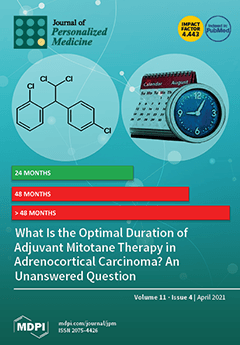IgA Nephropathy (IgAN) is the most common glomerulonephritis worldwide, characterized by the mesangial deposition of abnormally glycosylated IgA1 (Gd-IgA). The production of Gd-IgA occurs in mucose-associated lymphoid tissue (MALT). The microbiota plays a role in MALT modulation. Rifaximin (NORMIX
®), a non-absorbable
[...] Read more.
IgA Nephropathy (IgAN) is the most common glomerulonephritis worldwide, characterized by the mesangial deposition of abnormally glycosylated IgA1 (Gd-IgA). The production of Gd-IgA occurs in mucose-associated lymphoid tissue (MALT). The microbiota plays a role in MALT modulation. Rifaximin (NORMIX
®), a non-absorbable oral antibiotic, induces positive modulation of the gut microbiota, favoring the growth of bacteria beneficial to the host. Here, we evaluate the effect of rifaximin on a humanized mice model of IgAN (α1
KI-CD89
Tg).
Methods: The α1
KI-CD89
Tg mice were treated by the vehicle (olive oil) or rifaximin (NORMIX
®). Serum levels of hIgA, hIgA1–sCD89, and mIgG–hIgA1 immune complexes were determined. Glomerular hIgA1 deposit and CD11b+ cells recruitment were revealed using confocal microscopy. Furthermore, the mRNA of the B-Cell Activating Factor (BAFF), polymeric immunoglobulin receptor (pIgR), and Tumor Necrosing Factor-α (TNF-α) in gut samples were detected by qPCR.
Results: Rifaximin treatment decreased the urinary protein-to-creatinine ratio, serum levels of hIgA1–sCD89 and mIgG–hIgA1 complexes, hIgA1 glomerular deposition, and CD11b+ cell infiltration. Moreover, rifaximin treatment decreased significantly BAFF, pIgR, and TNF-α mRNA expression.
Conclusions: Rifaximin decreased the IgAN symptoms observed in α1
KI-CD89
Tg mice, suggesting a possible role for it in the treatment of the disease.
Full article





